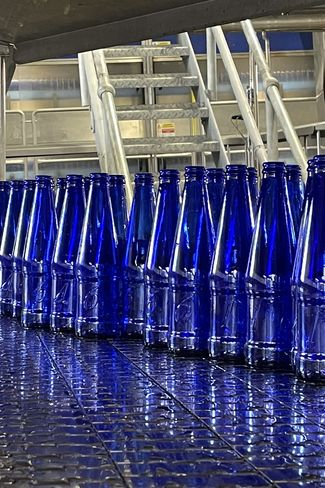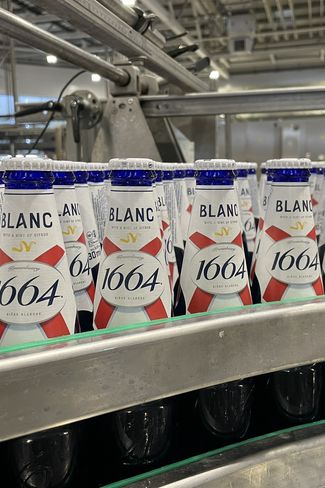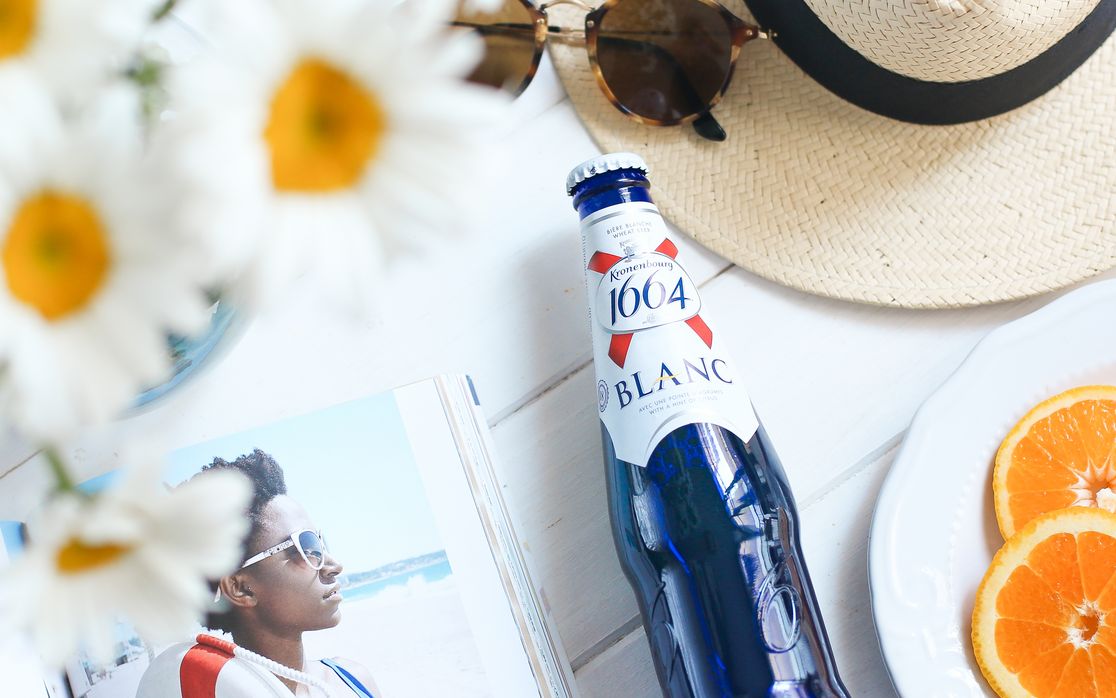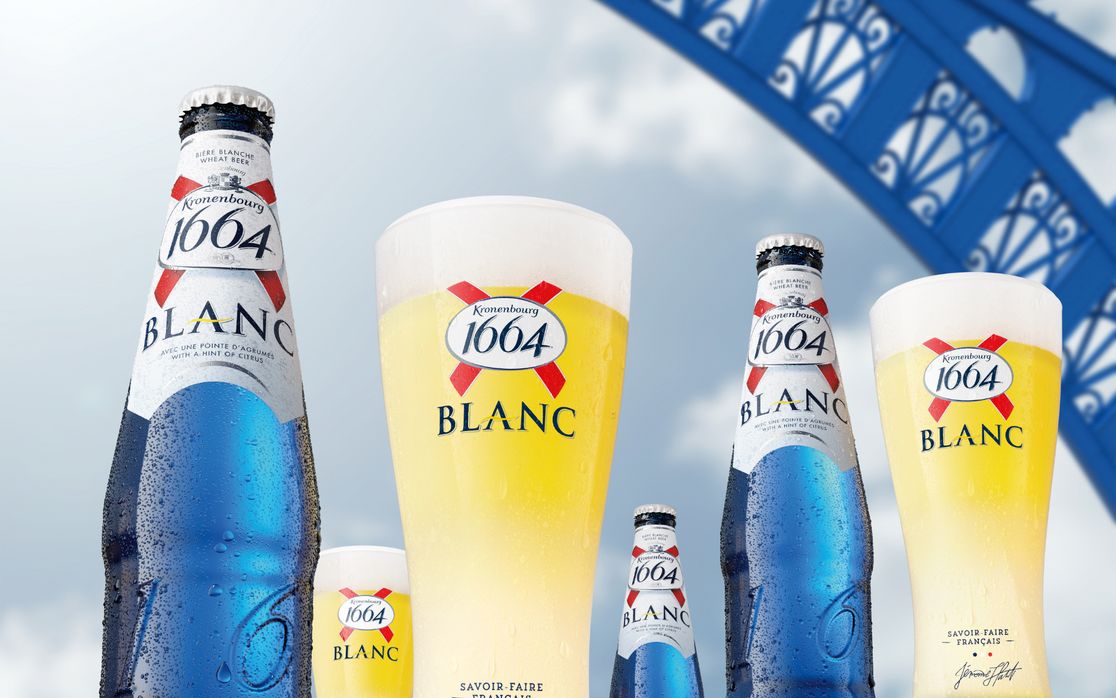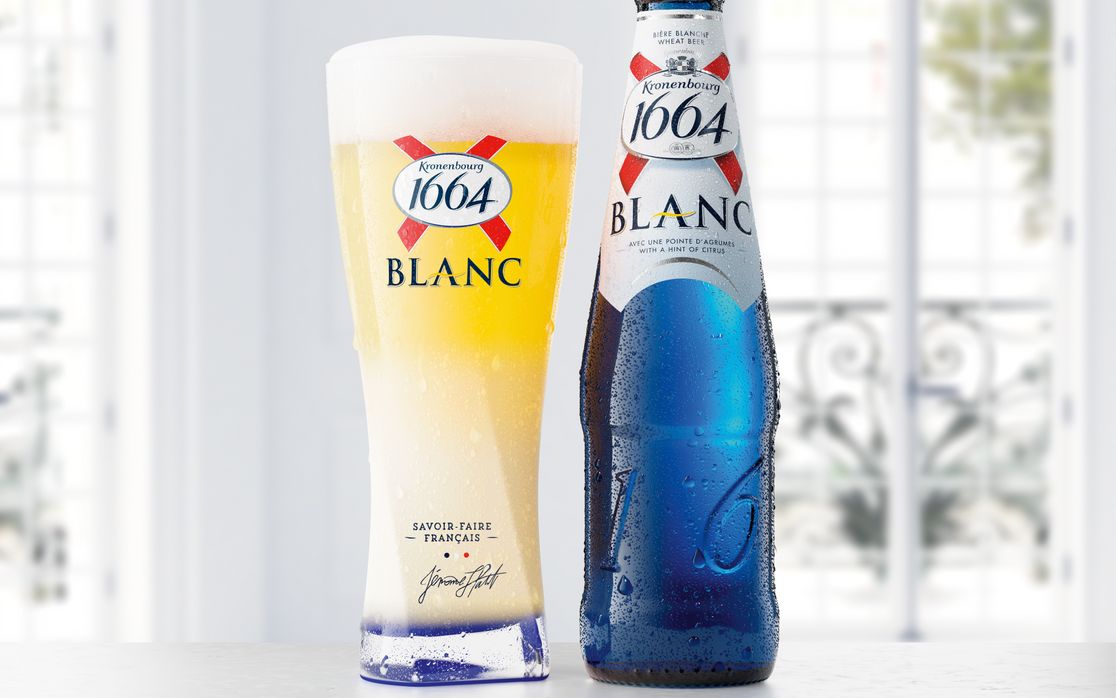Carlsberg
07/2022: Carlsberg launched its 1664 Blanc beer as an international brand in 2016 – and ever since then, it has never stopped growing. There’s no doubt that one factor in this success story is the distinctive blue bottle – supplied by Vetropack.
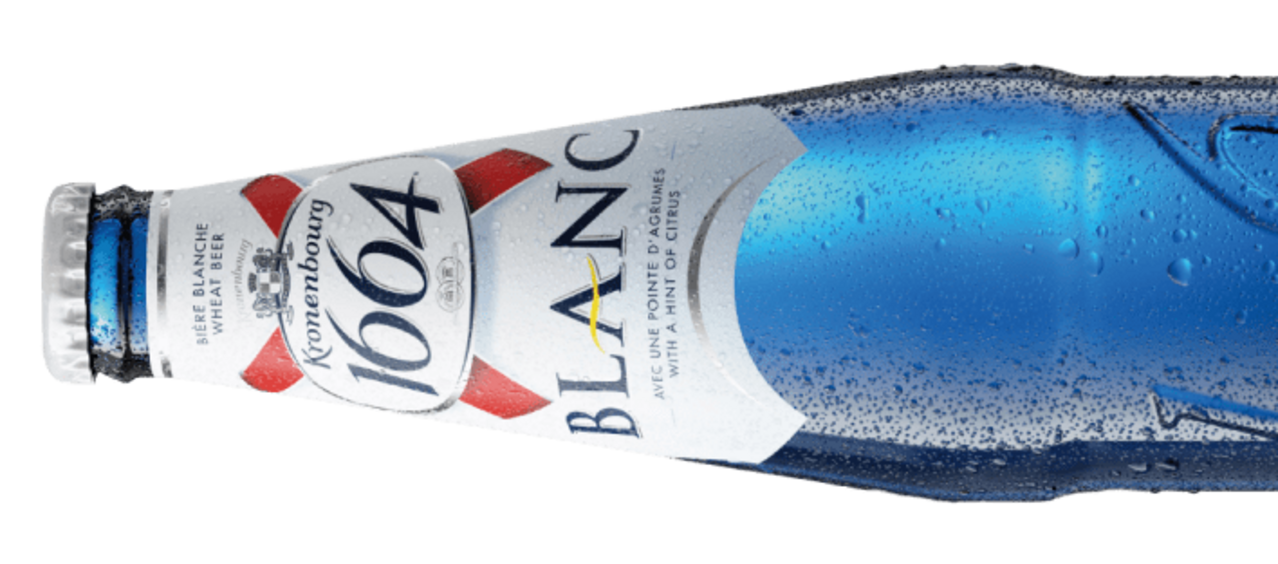
Carlsberg numbers among the world’s largest brewing groups. Founded in 1847 with its headquarters in Copenhagen, this Danish company has always set its sights beyond the borders of its home country. Its first foreign sales were made to Edinburgh (Scotland) as long ago as 1868, and the British Commonwealth was also a major market for Carlsberg throughout the 20th century. When Carlsberg merged with its main Danish competitor Tuborg in 1970, it became even clearer that this success story would not only go on – but go big!
Today, Carlsberg has brands and breweries almost everywhere in the world. Carlsberg continues to be a global trailblazer with a workforce of over 40,000, production volume of 142 million hectolitres (2021), and revenue in excess of DKK 60 billion (2021; equivalent to about EUR 8 billion). Popular international brands include Somersby, Tuborg, Grimbergen, 1664 Blanc and – of course – Carlsberg itself. The Group also owns
many local brands including Kronenbourg in France and Feldschlösschen in Switzerland, as well as Holsten, Wernesgrüner and Lübzer in Germany. Carlsberg’s portfolio comprises a total of over 500 regional beers, and the Group is present in many Asian and other overseas markets.
Global beer trends and glass packaging
The last two decades have seen a shift in global beer consumption: a diverse spectrum of tastes has emerged to challenge traditional recipes, with a clear trend towards non-alcoholic, mixed and speciality beers. As part of its response to these changes, Carlsberg launched 1664 Blanc, a premium wheat beer originating from France that conveys French lifestyle and savoir-vivre as an international brand in the premium segment. 1664 Blanc is a light and refreshing wheat beer, with a layered taste profile that has already made its appearance in over 40 markets across the globe.

«Vetropack is always ready to support us with driving innovations and customer-oriented initiatives ahead.»
Nikola Maravić has been Global Marketing Director for 1664 Blanc for the last three years, after joining Carlsberg ten years ago. He reports: “A new, fully alcohol-free variant of 1664 Blanc was launched in France this year, and will soon be available in key markets across Europe and Asia. But all the different variants are mainly there to strengthen the core proposition of 1664 Blanc – which, by the way, is probably the only beer brand in the world to have a year of origin as its name.”
One of the key attributes that make 1664 Blanc stand out on the shelf is the blue bottle. “With its special shape inspired by the Eiffel Tower and its unique blue colour, the bottle perfectly embodies the premium identity of 1664,” Maravic emphasises. “Blue is a colour that stands for trust, loyalty and stability – but also for depth, wisdom and sincerity. It’s one of our ingredients for a successful brand – ideally complementing the recipe and the French lifestyle of elegance and joie-de-vivre.”
Partnering to deliver sustainable added value
“Vetropack is always ready to support us with driving innovations and customer-oriented initiatives ahead,” Maravic notes. “Their work is highly reliable and professional, and they also support us on our sustainability journey – by continuously reducing the carbon footprint of our bottles.”
As a vital part of its business strategy, Carlsberg is driving sustainability ahead in its operations – its 'Together Towards ZERO' programme targets four clear goals: zero carbon footprint, zero water waste, zero irresponsible drinking, and zero accidents. For its part, Vetropack is naturally pursuing similar strategies – so both companies can work closely together and adopt a joint approach that will leverage potential to promote sustainability. Examples of this collaboration include interlinked business processes and supply chain management, more lightweight packaging, and also new materials and technologies.
